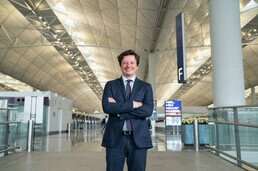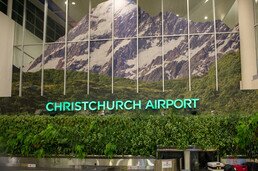GAR Case Study: Ground Services Equipment Pooling Scheme at Hong Kong International Airport
- 15 Jul 2021
In June 2021, ACI Asia-Pacific announced the recipients of the Green Airports Recognition 2021 programme. This year, the programme called for outstanding achievements in improving local air quality. To continue showcasing the environmental progress of our airport members, we take a closer look at the Gold-recognized projects. Next up in the more than 25 million passengers per annum category: Hong Kong International Airport.

With a view to improving operating efficiency and reducing air emissions, the Airport Authority Hong Kong (AAHK) rolled out a new Ground Services Equipment (GSE) Pooling Scheme at Hong Kong International Airport (HKIA) in July 2018. Initially implemented as Phase 1 at the Midfield Apron, the scheme enables ramp handling operators (RHOs) serving client airlines to rent critical GSE, of which 95% are electric-powered, from AAHK. Phases 2 and 3 of the scheme are planned and when fully implemented in 2024, AAHK will own 1,000 units of GSE.
The scheme was first conceived when AAHK initiated a review of aircraft ramp handling processes, which included an in-depth analysis of arrival baggage delivery performance in 2016.

New GSE Maintenance Workshop
The findings revealed timely provision of GSE is one of the most important factors affecting HKIA’s service standards. Likewise, the deployment of GSE from flight to flight across the apron increasingly led to traffic congestion peak periods throughout the day. This not only affected the on-time performance of arriving baggage and departing flights, but also led to increased air emissions, especially when the RHOs have been using many aged diesel-powered GSE.
Under the new AAHK’s ownership model, all critical GSE are standing by at every parking stand and the need for mobilizing GSE is minimized. This not only brings benefits in terms of reduced emissions and energy use, but also reduced unnecessary traffic on apron road and traffic congestion. Moreover, with 95% of GSE being electric-powered, exposures of workers and other receptors to NOx, particulates and other pollutants are significantly reduced. In addition to spending over HK$300 million (~US$38.6 million) to procure the GSE, AAHK also funded installation of chargers, established two GSE maintenance workshops, provided training, and developed detailed operations process to include in its handbook.

eGSE Chargers at parking stands
Through early engagement of RHOs and other relevant stakeholders in planning of the scheme, AAHK demonstrated the power of proactive, collaborative stakeholder engagement. The scheme is well received by all stakeholders including the RHOs, as it promotes resources sharing with guaranteed GSE availability at a lowered operating cost. The scheme allowed optimized use of GSE and at the same time reduced the total GSE fleet size needed at HKIA.
Through centralized provision, management and maintenance of all critical GSE, the overall investment and operational cost are reduced while safe operation of GSE are also enhanced via relevant training provided to RHOs. The provision of on-stand GSE also helped RHOs to meet prescribed performance level and avoided aircraft ground delays caused by lateness or insufficient provision of GSE. From available statistics for Q4 2019, the key performance indicators for baggage delivery performance have consistently surpassed 97% with a daily throughput exceeding 127K bags on average, which demonstrated overall enhancement of the RHOs’ operation efficiency.

The case studies of all recognised airports are collated in the Green Airports Recognition 2021 publication.









